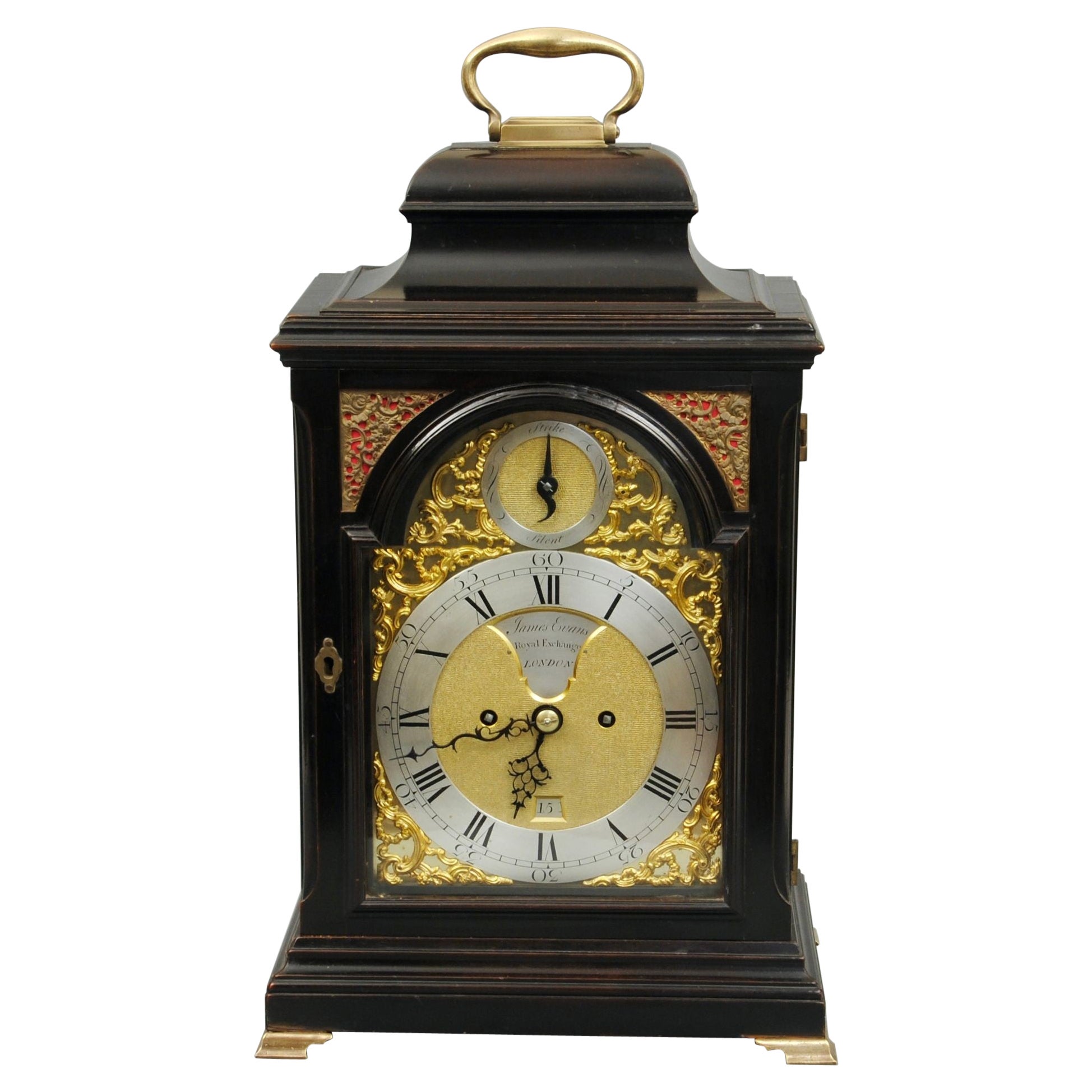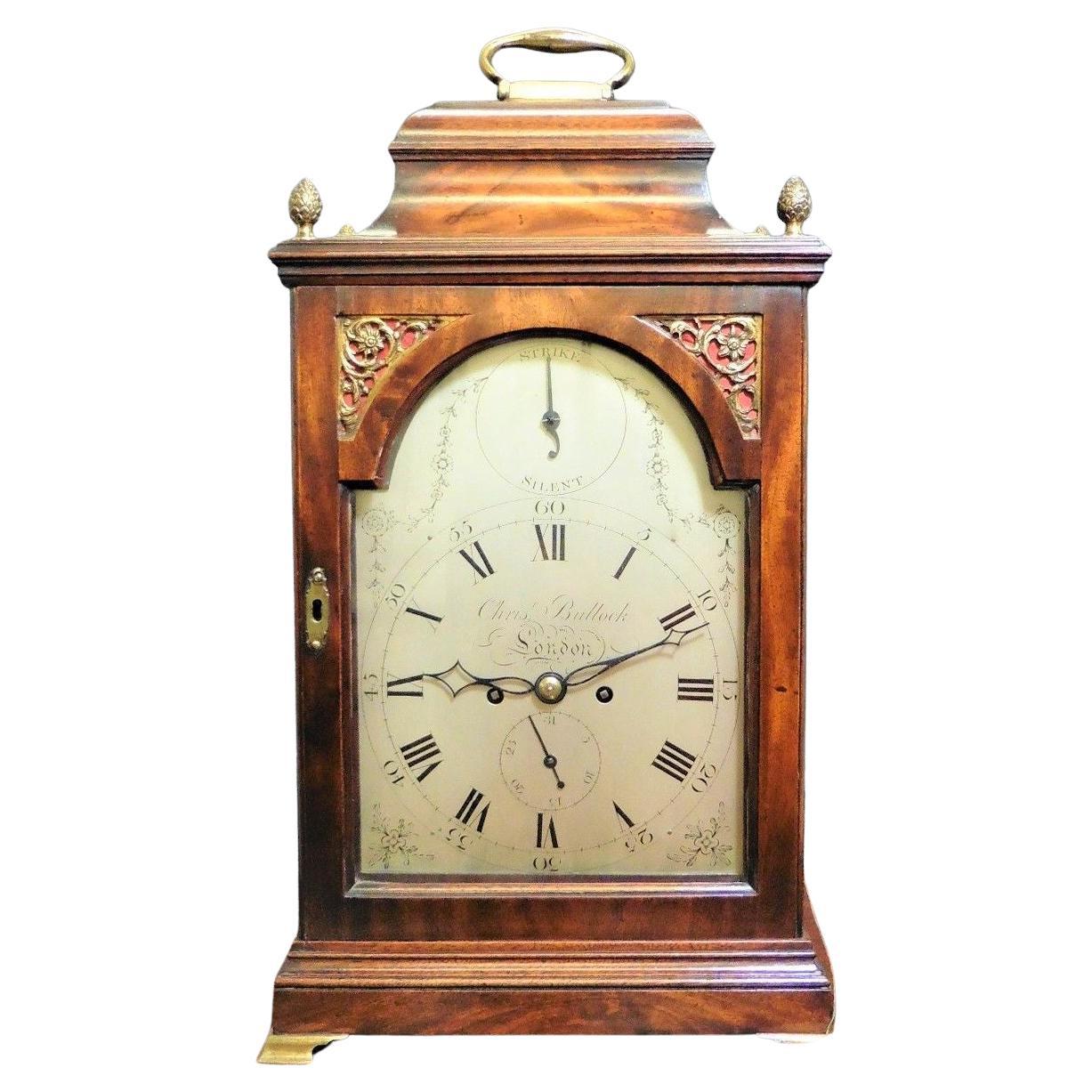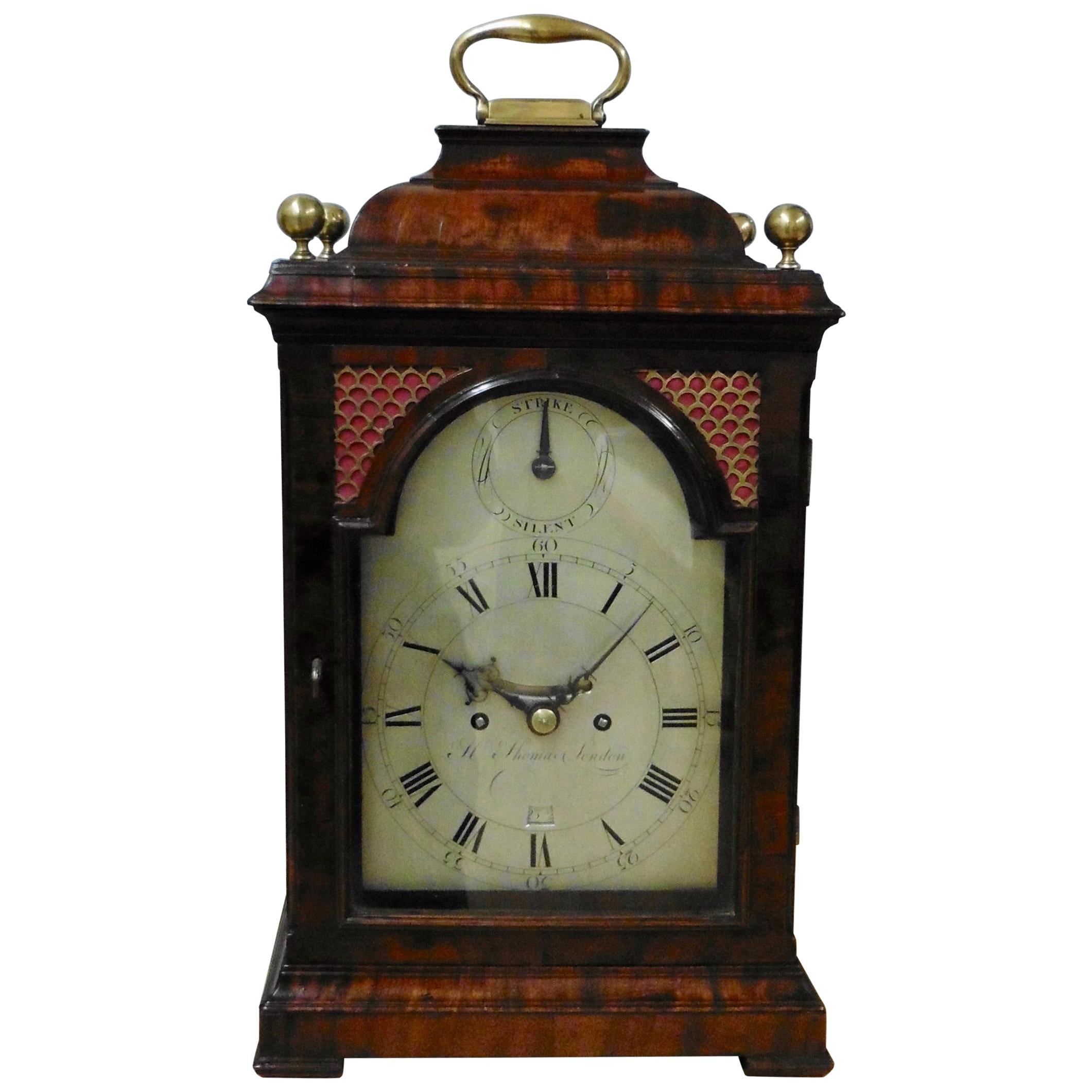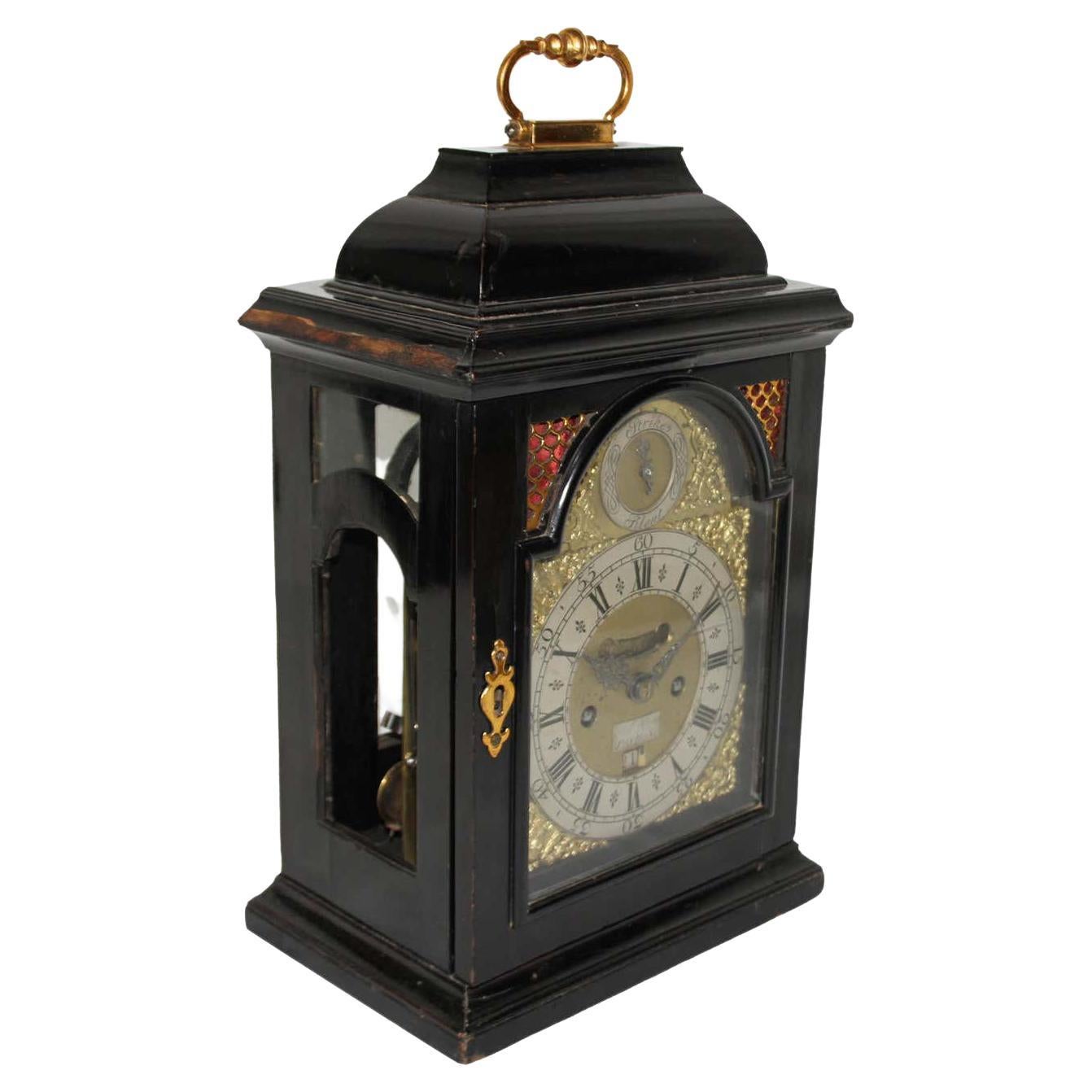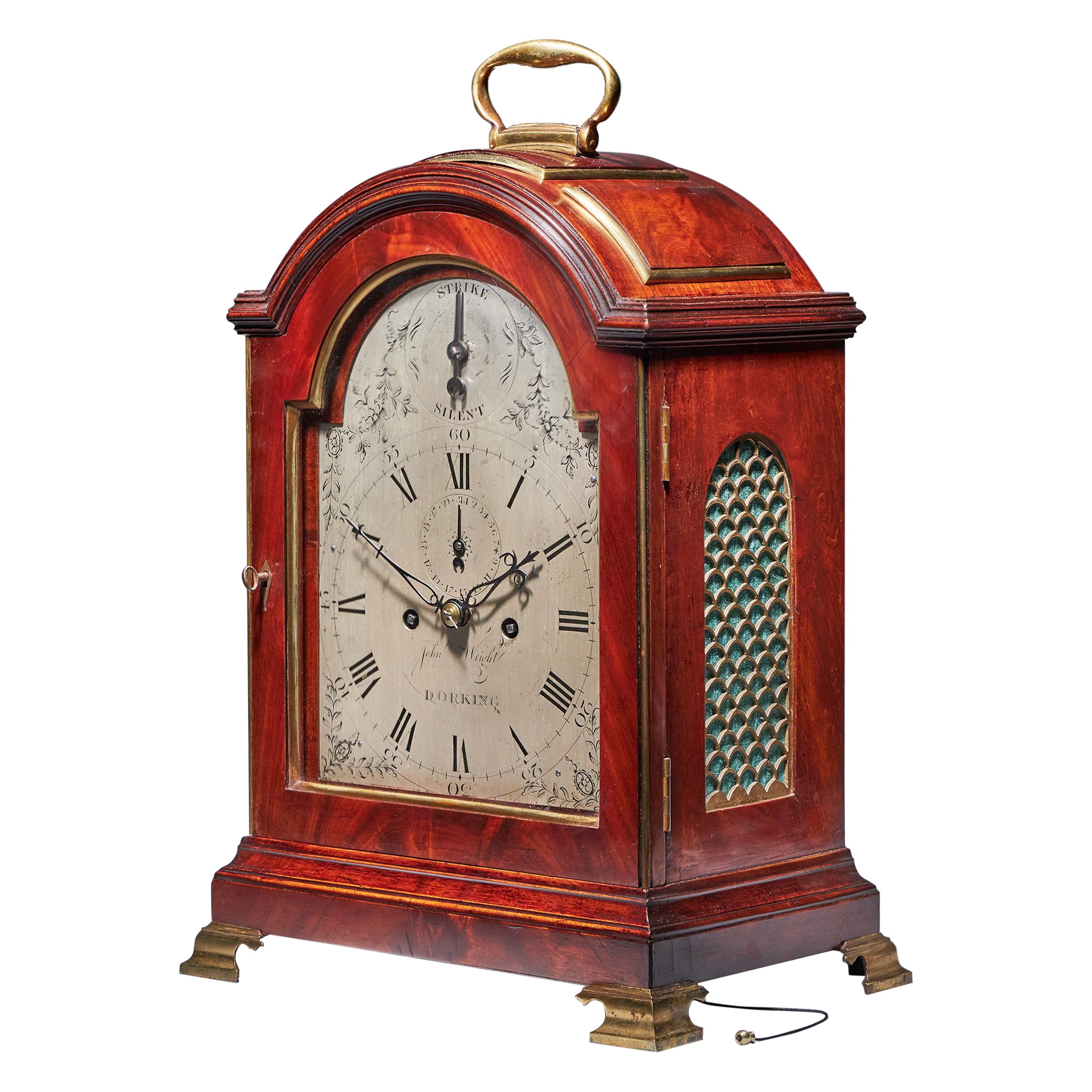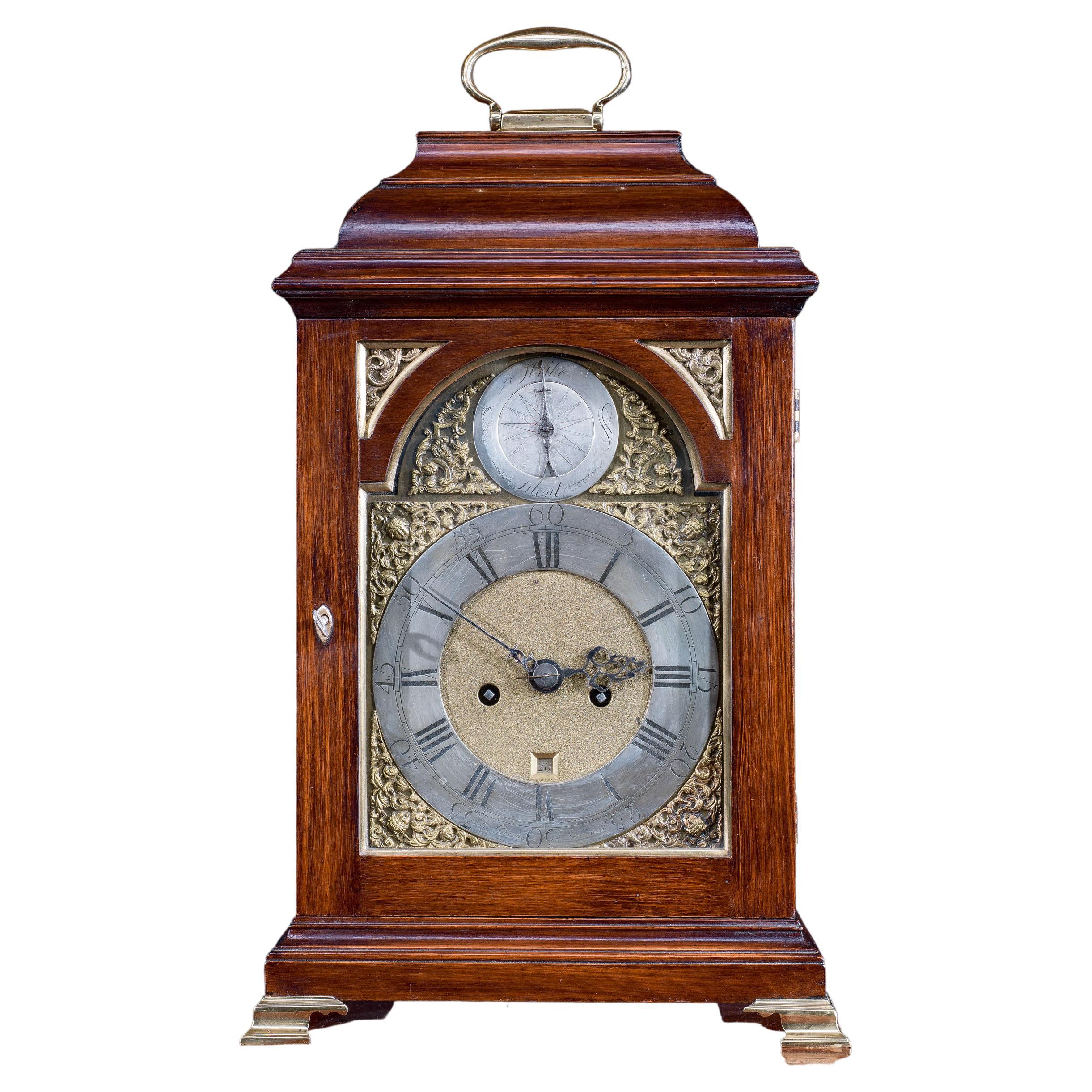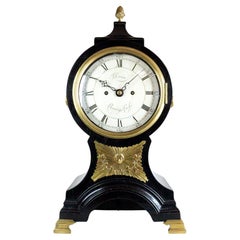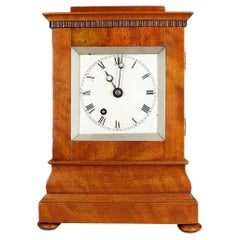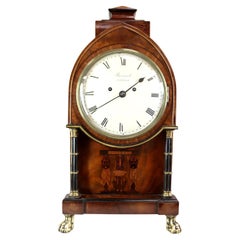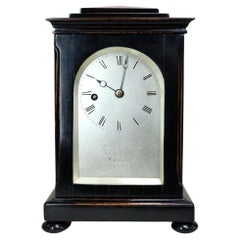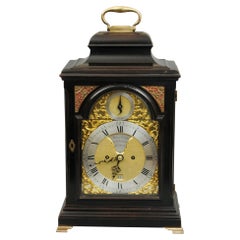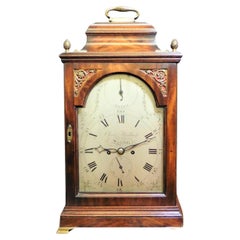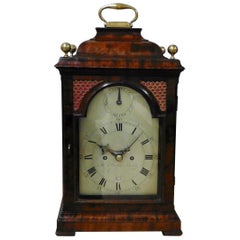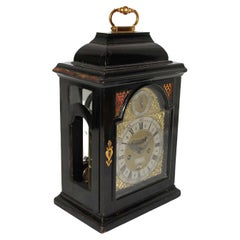Items Similar to A Rare George III Ten Bell Quarter Chiming Bracket Clock By Allam and Caithness
Video Loading
Want more images or videos?
Request additional images or videos from the seller
1 of 15
A Rare George III Ten Bell Quarter Chiming Bracket Clock By Allam and Caithness
$18,155.67
£13,325
€15,474.41
CA$24,993.55
A$27,322.85
CHF 14,455.02
MX$326,961.86
NOK 183,919.36
SEK 168,359.57
DKK 115,584.24
About the Item
A rare example of a quarter chiming bracket clock made 1800-1805 by John Allam and Thomas Caithness with an eight day triple fusee movement chiming on ten bells. This clock has an unusual recoil escapement of cut cylinder form chiming the quarters on 10 bells.
The substantial three train fusee movement united by four baluster pillars, strikes the hours on a single bell and chimes the quarters on a run of ten bells and hammers, regulated by a steel-rod pendulum suspended between cheeks for the rise-and-fall regulation, terminating in a heavy brass bob with hold fast. The back plate is beautifully engraved with a scrolling foliate design and emerging form a central urn above a oval cartouche signed Allam and Caithness LONDON. The movement has a pull cord to advance/correct the chiming.
Housed in an ebonised triple pad case with brass-bound pads centred by a handle over silk-backed sound frets on a moulded and brass bound base and ogee bracket feet. The four canted corners with brass facings and the front and back doors with brass liners. The silvered break arch dial with roman numerals signed Allam & Caithness LONDON, with finely pierced blued steel hands with strike silent and rise fall regulation dials to the arch.
Similar examples by Allam and Caithness can be found in the collection of the Royal Antiquarians Society, and also documented in the English Bracket Clock by Richard Barber p182. However both of these examples are twin fusee hour striking clocks and not quarter chiming like the one offered here.
Many Allam and Caithness clocks have movements made by Thwaites, however this movement has no other marks or signatures that would suggest this is one of them the unusual escapement would suggest that this was an early and innovative clock movement made in their own workshops. This is also the only quarter chiming example by them that we can find. The nest of ten bells is of particular note (see video) making a wonderfully crisp tone.
Allam & Caithness succeeded Allam & Clements and are recorded as working at 119 Bond Street, London, 1800 – 1805. John Allam apprenticed to his father William set up with another fellow apprentice to Thomas Caithness. They must have been very successful to maintain such a prestigious address in their short five year partnership. the brief span of this partnership is also useful in dating this clock to the first five years of the nineteenth century.
John Allam died bringing the partnership to an end, little is recorded about what happened to Thomas Caithness. A watch barrel bar in the British Museum’s collection offers a tantalising clue signed Caithness and Bicknell, it is presumed he went on to form another successful partnership.
Allam & Caithness are documented in 9 The English Domestic Clock by Cescinsky and and Webster P309.
This clock is shown unserviced but will be fully overhauled before delivery, this clock comes with our two year guarantee.
43cm H x 31cm W x 20cm D
- Dimensions:Height: 16.93 in (43 cm)Width: 12.21 in (31 cm)Depth: 7.88 in (20 cm)
- Style:George III (Of the Period)
- Materials and Techniques:
- Place of Origin:
- Period:
- Date of Manufacture:1800
- Condition:Wear consistent with age and use. This clock will be overhauled and delivered in working ordered.
- Seller Location:Amersham, GB
- Reference Number:Seller: 3741stDibs: LU9135247150302
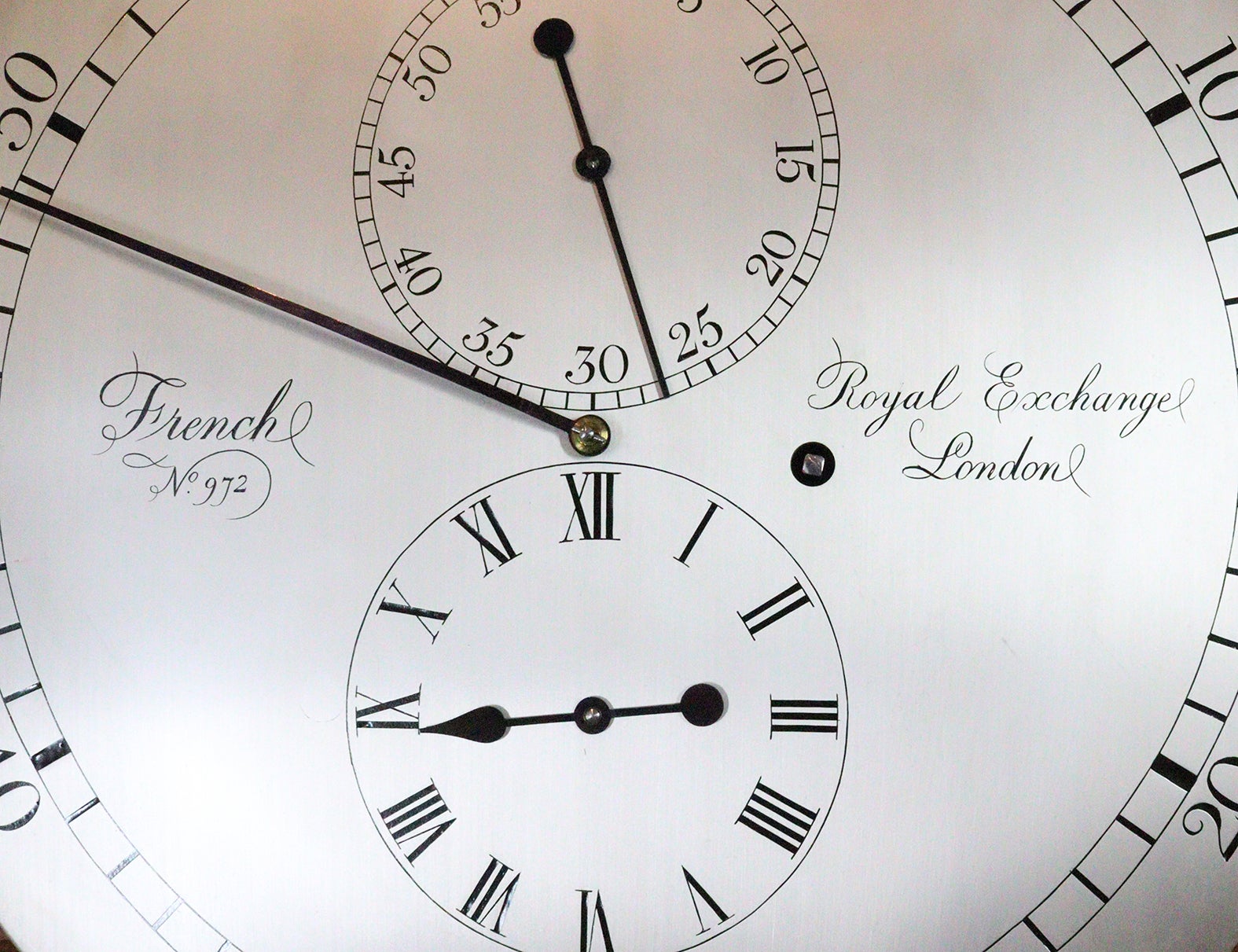
About the Seller
No Reviews Yet
Vetted Professional Seller
Every seller passes strict standards for authenticity and reliability
Established in 2021
1stDibs seller since 2023
8 sales on 1stDibs
Typical response time: 1 hour
- ShippingRetrieving quote...Shipping from: Amersham, United Kingdom
- Return Policy
More From This Seller
View AllJohn Leroux, London. Twin Fusee Balloon Clock
By John Leroux
Located in Amersham, GB
An 18th century balloon shaped bracket or table clock by John Leroux of Charing Cross, dating from circa 1790. The waisted case surmounted by a brass pineapple finial over a drum housing the movement. The dial is behind a hinged convex glazed cast brass bezel to front and brass carrying handles to sides, over hipped concave-sided section forming the base. The front has an applied mount of a sunburst mask, the rear with keyhole shaped door incorporating fine scroll-pierced sound fret set within the frame of the case, on generous cavetto moulded skirt base incorporating break-arch recess to apron and with ogee bracket feet.
The five knopped pillar twin fusee bell striking movement with rounded angles to the rectangular plates and anchor escapement regulated by a long bob pendulum with an effective length of approximately 11.5 inches, the backplate signed J. Leroux, London to centre, the 7 inch circular single sheet silvered brass Roman numeral dial signed Leroux, Charing Cross to centre, with fine pierced steel hands and Arabic five minutes to outer track.
An identical clock is illustrated in English Bracket and Mantel Clocks by Andrew Nicholls...
Category
Antique 18th Century English George III Mantel Clocks
Materials
Brass
A Very Fine Regency Library Clock
Located in Amersham, GB
This eight day single fusee library timepiece is of unusually small proportions, the a four pilars holding the two thick brass plates. The movement with anchor escapement has an adju...
Category
Antique 1830s English Regency Table Clocks and Desk Clocks
Materials
Brass, Steel
A Paul Philip Barraud Bracket Clock in the manner of Thomas Hope
Located in Amersham, GB
A very striking twin fusee bracket clock in an Egyptian revival style case by Paul Philip Barraud. The eight day movement with unusual round plates of thick brass engraved on the bac...
Category
Antique Early 1800s English Egyptian Revival Mantel Clocks
Materials
Brass, Steel
A Single Fusee Library Timepiece by Phillips Brothers
Located in Amersham, GB
A fine single fusee timepiece dating from the beginning of Queen Victoria’s reign Circa 1840. The eight day movement with anchor escapement with a suspended pendulum bob with top adj...
Category
Antique 1840s English Early Victorian Table Clocks and Desk Clocks
Materials
Brass, Steel
Goliath Four Glass Clock
By Samuel Marti
Located in Amersham, GB
This exceptionally rare table regulator of oversized proportions is deceptive in scale, from the movement and escapement to the pendulum every aspect o...
Category
Antique 1880s French Late Victorian Mantel Clocks
Materials
Brass, Enamel, Ormolu
$9,060
Repeating Drocourt Carriage Clock with Alarm
Located in Amersham, GB
A strike repeat alarm carriage clock by Pierre Drocourt. Stamped and numbered with the Drocourt mark on the back plate in a gilded 'Gorge' case. Drocourt was one of the great carriag...
Category
Antique 1860s French Victorian Carriage Clocks and Travel Clocks
Materials
Brass, Steel, Ormolu
You May Also Like
18th Century Bell Top Bracket Clock by James Evans
Located in Lincolnshire, GB
An elegant 18th century 8 day verge bracket clock in ebonised case by James Evans London.
The back plate beautifully engraved.
The movement has ...
Category
Antique Late 18th Century English Mantel Clocks
Materials
Wood
George III Bracket Clock by Christopher Bullock, London
Located in Norwich, GB
George III bracket clock by Christopher Bullock, London
Finely figured mahogany bell top case with four ‘pineapple’ finials surmounted by a h...
Category
Antique 1760s English Table Clocks and Desk Clocks
Materials
Mahogany
George III Mahogany Bell Top Bracket Clock With Verge Escapement by H.Thomas
By Henry Thomas
Located in Norwich, GB
George III bracket clock by H.Thomas, London
Mahogany bell top case surmounted with hinged carrying handle and four brass ball finials stan...
Category
Antique 1760s British George III Mantel Clocks
Materials
Mahogany
Early 18th Century Francis Gregg English Bracket Clock
Located in Southall, GB
Francis Gregg, London. A fine table clock. The break arch brass dial with silvered chapter ring, matted centre, calendar aperture and false pendulum aperture with silvered cartouche ...
Category
Antique Early 18th Century English Mantel Clocks
Materials
Wood
18th Century George III Figured Mahogany Three Pad Stricking Bracket Clock
Located in Oxfordshire, United Kingdom
18th century George III figured mahogany three pad bracket clock by John Wright Dorking, Circa 1780. England
A most attractive English bracket clock, made around 1780, signed on ...
Category
Antique 18th Century English George III Table Clocks and Desk Clocks
Materials
Brass
Fine Georgian Eight Day Bracket Clock
Located in London, GB
A fine Georgian walnut bracket clock by John Greaves of Newcastle (born c.1725 and active between 1745-94) with an eight day five pillar twin train fusee movement and anchor escapeme...
Category
Antique Mid-18th Century English George III Mantel Clocks
Materials
Walnut
